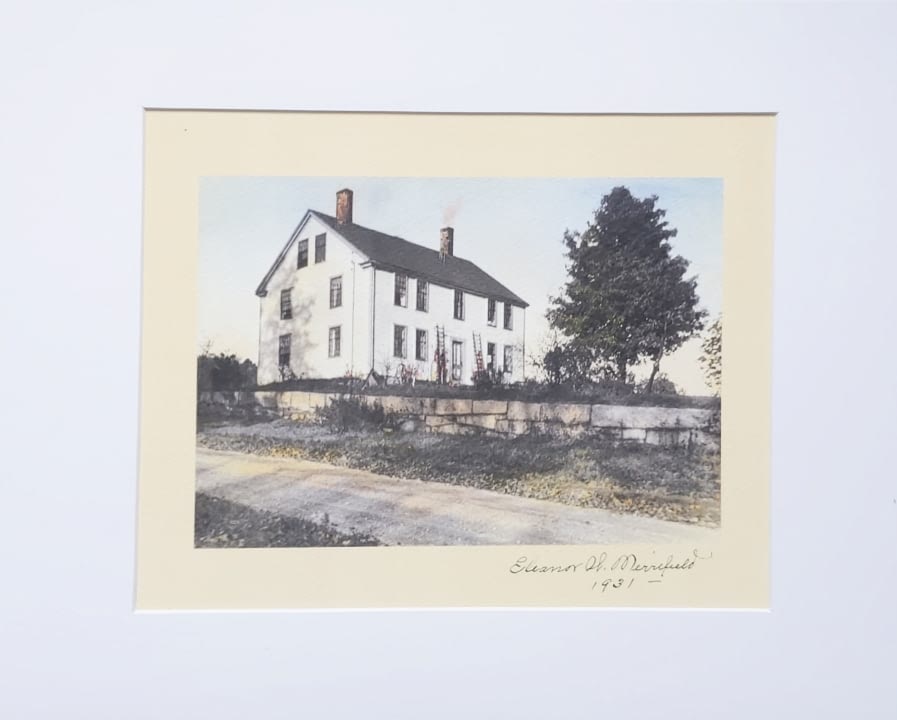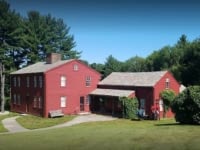Colonel Henry Bromfield
1727-1820Colonel Henry Bromfield, “whose picturesque figure and strong individuality made him a notable feature of the town’s life” came to Harvard from Boston in 1777 and lived here until his death in 1820. His mansion, approached by an elm-lined walkway, burned to the ground in 1855. On the site, the Bromfield Academy was built (1878) with money left in the will of Henry’s granddaughter, Margaret Bromfield Pearson Blanchard. The old school was expanded to become the new Harvard Public Library in 2007.
Bromfield’s “official dignities, his wealth and aristocratic bearing, his studied politeness and the elaborate costume of the old school gentleman harmonized well with the stately mansion” (“History of Harvard,”Henry Nourse). We can imagine “what a pleasing picture was presented by the venerable man up to the very last year of his life, as he wended his way on the Sabbath day, beneath the stately avenue of elms, to the village church, clothed in his scarlet cloak, wig and cocked hat, silk stockings and silver knee buckles, with long gold-headed cane in hand, followed at a respectful distance by his faithful Negro servant Othello” (Turner’s Public Spirit). Othello, who had been manumitted but chose to remain in service, is buried in a secluded spot behind the Congregational Church.
A successful merchant in Boston, Bromfield served seven months as a Colonel in the Boston regiment of the Continental Army. He then retired from business and moved from Boston to Harvard, Mass. During his time in Harvard, Bromfield used his money and business acumen to make significant contributions to the town, among them the founding of the Union Turnpike Corporation.. He was married twice and had six children. His granddaughter, Margaret Bromfield Blanchard, created the Bromfield School and Trust.
Bromfield’s red cape, hat, and sword displayed in one of his portraits are preserved at the Historical Society of Massachusetts.























